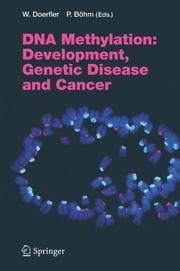| Listing 1 - 10 of 29 | << page >> |
Sort by
|
Book
ISBN: 084120442X Year: 1977 Publisher: Washington, District of Columbia : American Chemical Society,
Abstract | Keywords | Export | Availability | Bookmark
 Loading...
Loading...Choose an application
- Reference Manager
- EndNote
- RefWorks (Direct export to RefWorks)
Dissertation
ISBN: 9155407595 Year: 1978 Publisher: Uppsala Reklam & Katalogtryck
Abstract | Keywords | Export | Availability | Bookmark
 Loading...
Loading...Choose an application
- Reference Manager
- EndNote
- RefWorks (Direct export to RefWorks)
Acids --- Alkylation --- Chromatography, Gas

ISBN: 222564537X 3134962012 Year: 1979 Publisher: Stuttgart : Paris : Georg Thieme Masson,
Abstract | Keywords | Export | Availability | Bookmark
 Loading...
Loading...Choose an application
- Reference Manager
- EndNote
- RefWorks (Direct export to RefWorks)
Functional groups. --- Organic compounds. --- Acylation --- Alkylation --- Reaction (chemistry) --- Acylation --- Alkylation --- Reaction (chemistry)
Book
Year: 2010 Publisher: Bruxelles: UCL,
Abstract | Keywords | Export | Availability | Bookmark
 Loading...
Loading...Choose an application
- Reference Manager
- EndNote
- RefWorks (Direct export to RefWorks)
The term « cancer» comes from the Greek karkinos meaning crab. It is any disease that is characterized by rapid multiplication and anarchie of abnormal cells, from any tissue of the body. ln 2006 and in Belgium, a total of 29 708 patients died of cancer, making this disease the second leading cause of death.
The chemotherapy is cytotoxic therapy that aims to destroy cancer cells by blocking their division. It began with the discovery of leucopenic properties of mustard gas in the 1940s. The chlormethine, a bio-isoteric derivate of mustard gas, was the first alkylating agent to enter the scene. Subsequently, other structural analogues (aromatic mustards, oxazophorines) were synthesized in the hope of limiting side effects (hematological toxicity, nausea and vomiting, alopecia ... ) associated with the concomitant damage to healthy tissue and promote oral use.
The target of alkylating agents is the DNA double helix. They form covalent bonds with the nucleic bases. This alkylation reaction, equivalent to a bimolecular nucleophilic substitution reaction (chlormethine) or unimolecular (chlorambucil), replaces a hydrogen atom by an alkyl group. The preferred site of alkylation is the nitrogen N7 of guanine. The most effective alkylating agents are those who possess two reactive sites because they do two covalent bonds with two guanine bases in an intra or intercatenar way. Structural changes created then block the replication of DNA and his transcription into RNA. This barrier causes cell death.
The alkylating agents are, at present, still very widely used. The development of nanovectors loaded in anticancer agent offers new hope in cancer treatment by favoring the transport of the antitumor agent at the precise spot where it will be useful. Le terme « cancer» vient du grec karkinos qui signifie crabe. Il s'agit de toute maladie qui se caractérise par une multiplication rapide et anarchique de cellules anormales, à partir d'un tissu quelconque de l'organisme. En 2006 et en Belgique, un total de 29 708 de patients sont morts d'un cancer, faisant de cette maladie la deuxième cause de décès.
La chimiothérapie anticancéreuse est un traitement cytotoxique qui vise à détruire les cellules cancéreuses en bloquant leur division. Elle a débuté avec la mise en évidence des propriétés leucopéniantes du gaz moutarde dans les années 1940. La chlorméthine, dérivé bio-isostérique du gaz moutarde, fut le tout premier agent alkylant à entrer en scène. Par la suite, d'autres analogues structuraux (moutardes aromatiques, oxazophorines) ont été synthétisés dans l'espoir de limiter les effets secondaires (toxicité hématologique, nausées et vomissements, alopécie ... ) liés à l'atteinte concomitante des tissus sains et de favoriser un usage par voie orale.
Les agents alkylants cible la chaine d'ADN. Ils se fixent sur les bases azotées par formation d'un lien covalent. Cette réaction d'alkylation, assimilée à une réaction de substitution nucléophile biomoléculaire (chlorméthine) ou unimoléculaire (chlorambucil), remplace un atome d'hydrogène par un groupement alkyle. Le site privilégié de l'alkylation est l'atome d'azote N7 de la guanine. Les agents alkylants les plus efficaces sont ceux qui possèdent deux sites réactifs car ils réalisent deux liaisons covalentes avec deux bases guanines defaçonintra ou intercaténaire. Les modifications structurales ainsi crées bloquent la réplication de l'ADN et sa transcription en ARN. Cet obstacle entraine la mort cellulaire.
Les agents alkylants sont, à l'heure actuelle, encore très largement utilisés. Le développement de nanovecteurs chargés en agent anticancéreux offre de nouveaux espoirs dans le traitement des cancers en favorisant le transport de l'agent antitumoral à l'endroit précis où il sera utile.
Chemotherapy, Cancer, Regional Perfusion --- DNA Methylation --- Alkylation --- Alkylating Agents
Book
Abstract | Keywords | Export | Availability | Bookmark
 Loading...
Loading...Choose an application
- Reference Manager
- EndNote
- RefWorks (Direct export to RefWorks)
Book
ISBN: 089573494X 3527264671 Year: 1987 Publisher: Weinheim : VCH Publishers,
Abstract | Keywords | Export | Availability | Bookmark
 Loading...
Loading...Choose an application
- Reference Manager
- EndNote
- RefWorks (Direct export to RefWorks)
Oxidation. --- Addition reaction --- Alkylation --- Catalysis --- Reduction (chemistry) --- Transition state structure --- Addition reaction --- Alkylation --- Catalysis --- Reduction (chemistry) --- Transition state structure

ISBN: 0070417962 Year: 1996 Publisher: New York, NY : McGraw-Hill,
Abstract | Keywords | Export | Availability | Bookmark
 Loading...
Loading...Choose an application
- Reference Manager
- EndNote
- RefWorks (Direct export to RefWorks)
Hydrogenation. --- Alkylation --- Catalysis --- Coal gasification --- Coking --- Polymerization --- Reforming --- Separation --- Sulfur --- Alkylation --- Catalysis --- Coal gasification --- Coking --- Polymerization --- Reforming --- Separation --- Sulfur
Dissertation
Year: 1977 Publisher: [S. l.] : [chez l'auteur],
Abstract | Keywords | Export | Availability | Bookmark
 Loading...
Loading...Choose an application
- Reference Manager
- EndNote
- RefWorks (Direct export to RefWorks)
DNA --- DIMETHYLNITROSAMINE --- METHYL METHANESULFONATE --- LIVER REGENERATION --- ALKYLATION --- RATS --- BIOSYNTHESIS --- ADVERSE EFFECTS --- ADVERSE EFFCTS --- DNA --- DIMETHYLNITROSAMINE --- METHYL METHANESULFONATE --- LIVER REGENERATION --- ALKYLATION --- RATS --- BIOSYNTHESIS --- ADVERSE EFFECTS --- ADVERSE EFFCTS
Book
ISBN: 3319597868 3319597841 Year: 2017 Publisher: Cham : Springer International Publishing : Imprint: Humana,
Abstract | Keywords | Export | Availability | Bookmark
 Loading...
Loading...Choose an application
- Reference Manager
- EndNote
- RefWorks (Direct export to RefWorks)
This book will focus on DNA and histone methylation in epigenetics and describe how it is involved in the molecular mechanisms responsible for the development of cancer. Chapters will summarize the current knowledge of the molecular basis of DNA and histone methylation and explain how it is involved in cancer, describe the features of DNA and histone methylation associated with particular types of cancer, diagnostic/therapeutic applications, and future directions of DNA and histone methylation as cancer targets.
Cancer --- Methylation. --- Epidemiology. --- Medicine. --- Cancer research. --- Biomedicine. --- Cancer Research. --- Alkylation --- Oncology. --- Tumors --- Cancer research

ISBN: 1280627093 9786610627097 3540311815 3540311807 3642068308 Year: 2006 Publisher: Berlin : Springer,
Abstract | Keywords | Export | Availability | Bookmark
 Loading...
Loading...Choose an application
- Reference Manager
- EndNote
- RefWorks (Direct export to RefWorks)
It has become apparent that the genomes of many organisms are characterized by unique patterns of DNA methylation which can differ from genome segment to genome segment and cell type to cell type. These patterns can be instrumental in determining cell type and function. Thus, it is not surprising that studies on the role of DNA methylation now occupy center stage in many fields of biology and medicine such as developmental biology, genetic imprinting, genetic disease, tumor biology, gene therapy, cloning of organisms and others. Once again, basic research in molecular biology has provided the essential foundation for investigations of biomedical problems.
DNA --- Methylation. --- Deoxyribonucleic acid --- Desoxyribonucleic acid --- Thymonucleic acid --- TNA (Nucleic acid) --- Deoxyribose --- Nucleic acids --- Genes --- Alkylation --- Human genetics. --- Human Genetics. --- Genetics --- Heredity, Human --- Human biology --- Physical anthropology
| Listing 1 - 10 of 29 | << page >> |
Sort by
|

 Search
Search Feedback
Feedback About UniCat
About UniCat  Help
Help News
News